Bee-Loved
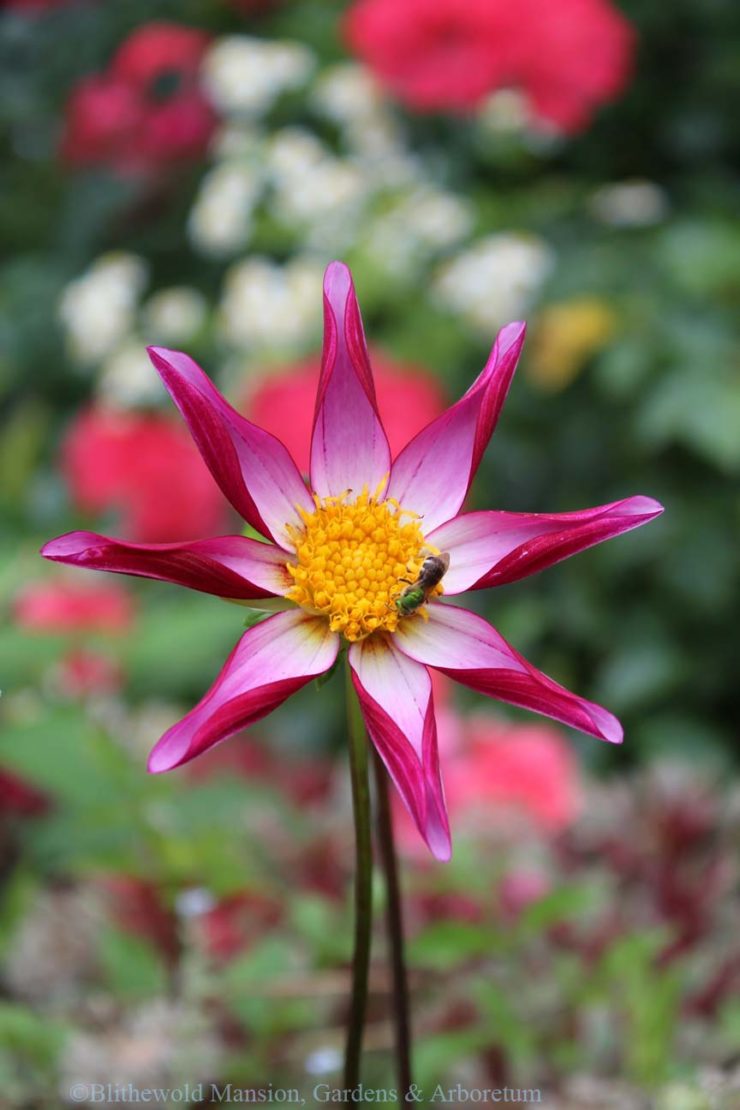
Pollinator Week in the US always seems a little early for us here in the northeast. Traditionally celebrated the last full week of June, Pollinator Week is a time to remember how important pollinators (and all insects) are to our world. At Blithewold we don’t see an explosion of bees, flies, and wasps until July. Sure, the bumblebees have been out and about since early spring and the honey bees venture out once temperatures rise above 50 degrees; but, we don’t see a ton of different pollinators until temperatures really start heat up.
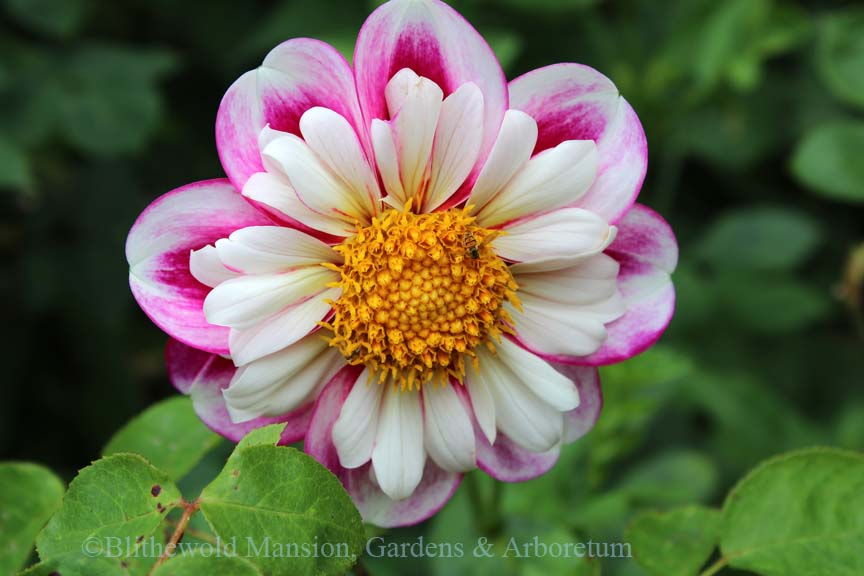
The featured image at the top of this blog is of Dahlia ‘NTAC Shelly’ with a sweat bee feasting on its pollen. ‘Bumble Rumble’, above, also is being enjoyed by a pollinator. This one is a syrphid fly. He is quite small, but you can find him at about 1 o’clock if you look closely. Open-faced dahlias (such as the orchid-flowering ‘NTAC Shelly’ and collarette ‘Bumble Rumble’, both found in the Rose Garden) are pollinator magnets. We always do our best to have a fair amount of these types of flowers for our pollinators. I would venture to guess that ‘Bumble Rumble’ was shown to be very popular with bumblebees based on its name.
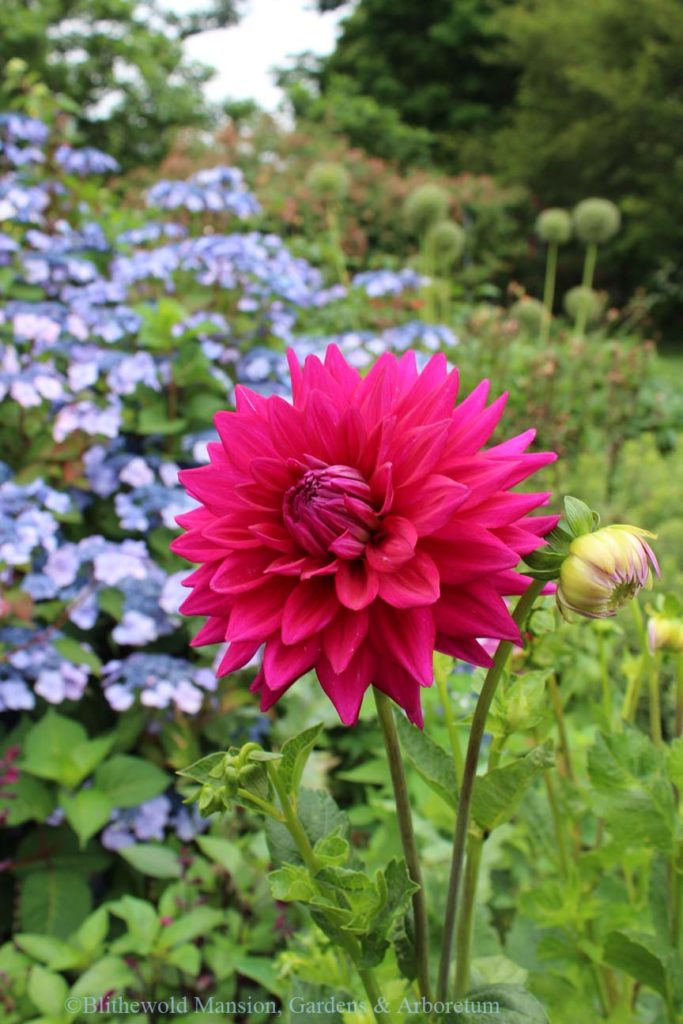
For contrast, here is Dahlia ‘AC Conan’ in bloom in the Rose Garden. It is a stunning blossom and I am so glad we have it. It adds height and drama towards the back of the garden near the parking lot gate. It is not, however, a great flower for pollinators. The layers and layers of petals conceal the pollen deep within and make it difficult for any insect to appreciate it. The hydrangea in bloom behind ‘AC Conan’ however, was full of pollinators floating around and visiting the blossoms.
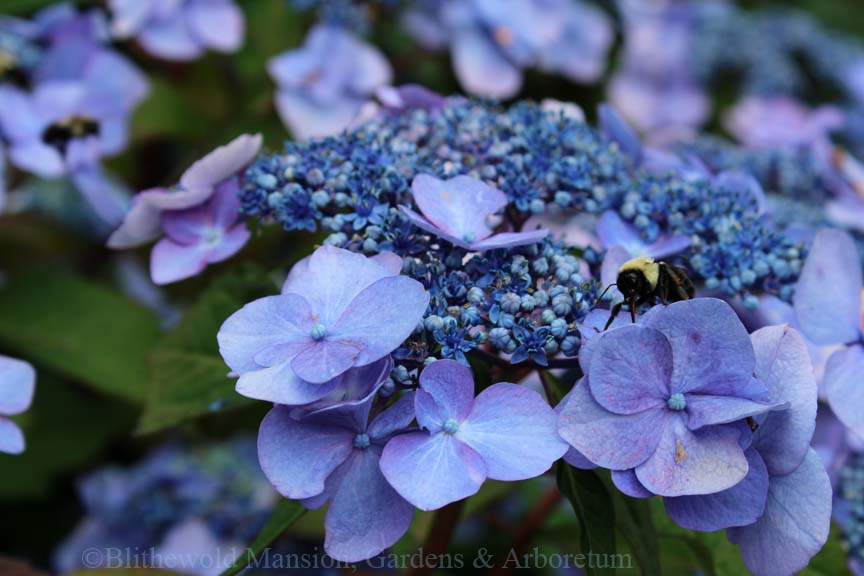
I’ve heard many remarks on this hydrangea lately. It really is a stunning color and a wonderful pollinator plant, too. The flowers were full of bumblebees and syrphid flies and other small bees. The amount of activity on the blooms caught me by surprise as I had not looked closely since the flowers opened.
Just to clear up any confusion with these types of blooms, the flowers are actually the tiny clusters of blossoms (or fertile florets) in the center and the outside, where the bumblebee is resting above, has a ring of sterile florets (the tiny dot in the center) with big showy sepals.
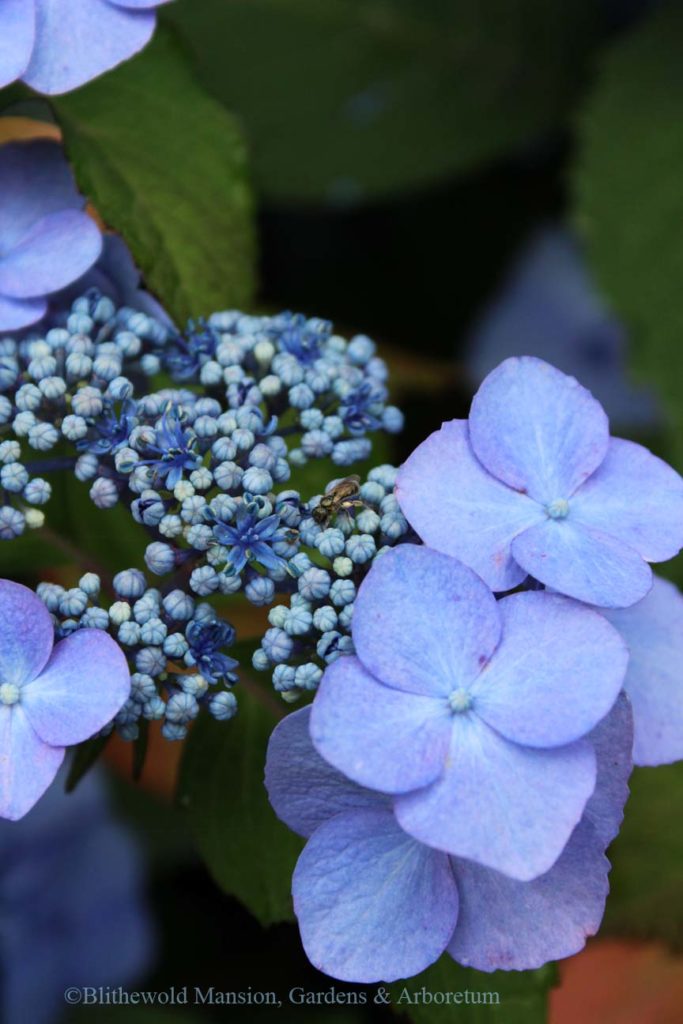
I will add one more beautiful contrast to illustrate my point on the best flower types for pollinators. Pictured below is another hydrangea, this one is an oakleaf hydrangea in bloom in a shady corner of the Rose Garden.
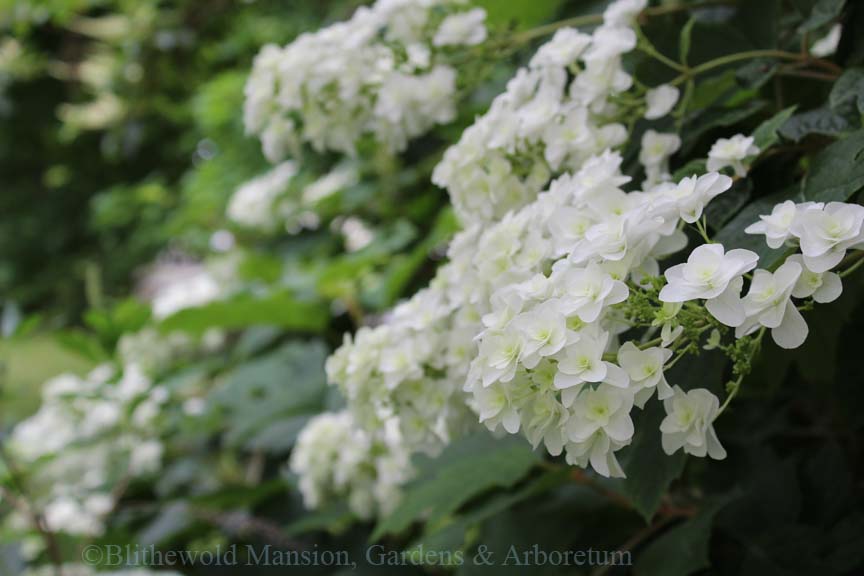
I love this plant. The layers of white and lime green are so refreshing to see on a hot July day. Not only is it beautiful now, but as the season progresses the blossoms change color to include glorious shades of blush pink. What is missing from the picture above are the pollinators. This is because the plant produces mostly sterile flowers. Therefore, if you are planting your garden for pollinators, this is not the plant for you. I am not saying it doesn’t have its place in the garden, but it is nowhere near the boon to beneficial insects that the Twist-N-Shout hydrangea is.
Now that I have armed you with some images and information, I urge you to take a look at your own garden or even just the flowers you walk by around town. Which ones are visited by pollinators? Which ones are not? There is more to helping the pollinators than planting pollinator-friendly flowers, but it is a great place to start.
Happy summer and happy gardening!
